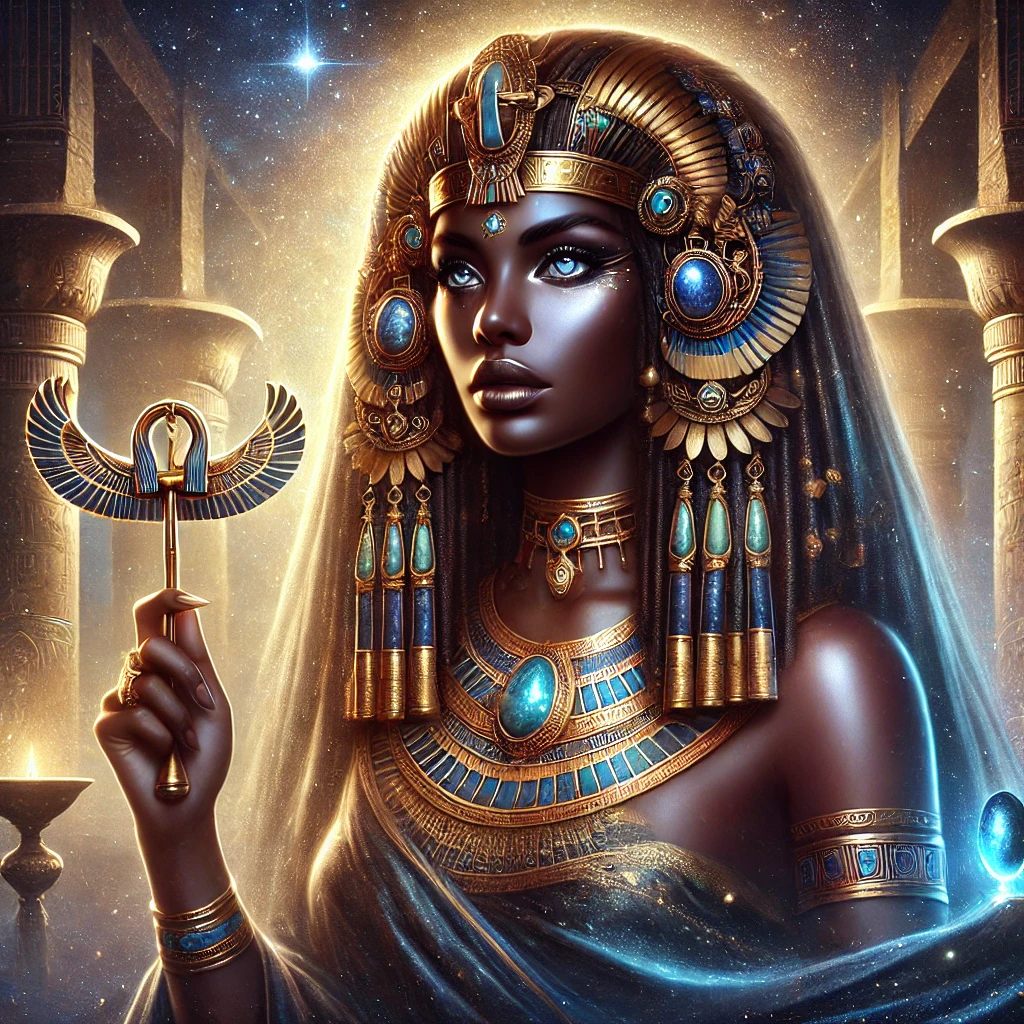
19. Amunet
Timeline: Middle Kingdom (c. 2055 BCE).
Known For: Hidden creation.
Role: Partner of Amun.
Symbols: Feather.
Cultural Significance: Embodied divine mystery.
19. Amunet: The Hidden One and Embodiment of Divine Mystery
Amunet, the goddess of hidden creation, played a crucial role in Kemetic mythology as the
feminine counterpart to Amun, the god of invisibility and hidden power. Known as the “Hidden
One,” Amunet symbolizes the unseen forces that shape the universe, embodying divine mystery,
creation, and feminine power.
Amunet’s presence highlights the Kemetic understanding of balance in creation, as she worked
alongside Amun to manifest the hidden energies of life. She was revered as a protective and
nurturing force, representing the unseen potential within all existence.
The Story of Amunet: The Hidden Creator
In Kemetic cosmology, Amunet was one of the Ogdoad of Hermopolis, a group of eight primordial
deities who embodied the fundamental aspects of creation. She represented the hidden and
mysterious forces of the universe, complementing Amun’s role as the unseen creator.
As a partner to Amun, Amunet worked to sustain the cosmos and the natural order. She was often
invoked in rituals and ceremonies to invoke her hidden power, ensuring the stability and harmony
of the universe.
Her name, meaning “The Hidden One,” emphasizes her role as the feminine force behind creation,
one that is ever-present yet beyond perception.
The Appearance of Amunet: Graceful and Mysterious
Amunet is often depicted as a regal woman with deep brown skin, reflecting her connection to the
people and land of Kemet. Her features are serene and enigmatic, embodying her role as the
goddess of hidden power.
Her headdress includes a feather, a symbol of truth and balance, highlighting her connection to
Ma’at (cosmic order). She is often shown holding an ankh, representing life, and a papyrus scepter,
symbolizing her role in sustaining creation.
Amunet’s attire is a flowing dark blue or gold gown, symbolizing mystery and divinity. Her jewelry,
crafted from lapis lazuli and turquoise, emphasizes her celestial connections and her role in the
hidden workings of the universe.
Amunet’s Role in Creation and Mystery
Amunet’s influence extended to both the spiritual and physical realms, as she was believed to guide
the unseen forces that maintained the cosmos. Her presence was invoked in rituals seeking to unveil
hidden truths or to protect and nurture life.
Her partnership with Amun reinforced the Kemetic principle of duality, where balance between the
seen and unseen, the masculine and feminine, was essential for harmony and creation.
Cultural Significance of Amunet
Amunet’s worship was prominent during the Middle Kingdom, when the cult of Amun rose to
prominence. Temples dedicated to Amun often included depictions and invocations of Amunet,
emphasizing her role as his divine partner and the embodiment of hidden power.
Her association with the Ogdoad highlighted her importance in the creation myths of Hermopolis,
where she was revered as a fundamental force of the universe.
Why Amunet Resonates Today
Amunet’s story reminds us of the power of the unseen and the importance of embracing mystery
and potential in our lives. She inspires us to trust in the hidden forces that shape our world and to
seek balance in the dualities of existence.
As a goddess with African features, Amunet reflects the spiritual depth and cultural richness of
Kemet. Her legacy continues to inspire those who value mystery, balance, and the unseen potential
within all creation.